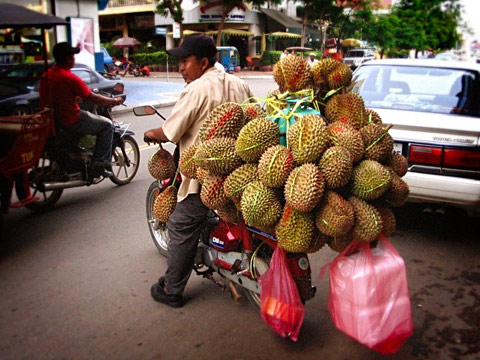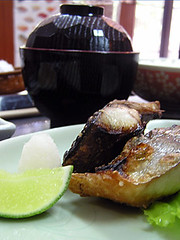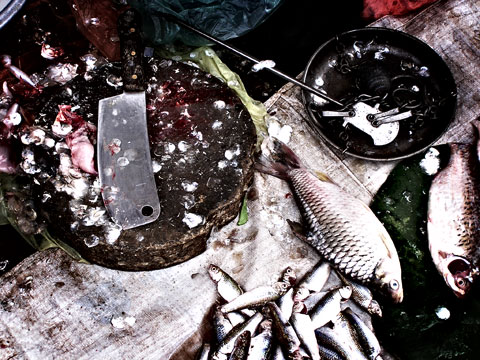I generally don’t jump on the meme bandwagon. When one of my favourite food web loggers, Austin at RealThai tags me for it, and Robyn at EatingAsia jumps on as well, it certainly can’t hurt to be seduced this time.
In 2004, BBC published a voter-recommend list of “foods to to eat before you die” which mostly proved that democracy does not work. Huge food blog Traveler’s Lunchbox pointed this out recently and sent out the call to food bloggers to nominate something better. Being the pimp of Khmer cuisine that I have become, here is my list of Cambodian foods to eat before you meet your untimely, but not wholly unexpected, denouement.
Prahok : It’s a little hard to wax lyrical about any food that is both the color grey and made from gutted, mashed then fermented animals. But if Cambodia was to replace the architectural ruin on their national flag with a foodstuff, prahok would be the most representative and versatile but the least visually appealing. You can eat this fermented fish paste raw, cooked, as a dipping sauce, and as a crucial ingredient in many typical Khmer foods.
Samlor Machou Yuon : Delicious sour soup and geopolitics, together at last. “Samlor Machou” refers to the whole genus of typical Khmer sour soups. “Yuon” refers to Vietnam or Vietnamese. Whether or not “Yuon” is a racial slur is a subject of huge debate, but it does show that when it comes to food, Cambodian people are passionate about their place in the world, and simultaneously defensive and acknowledging of the influence of other cultures’ cuisines on theirs. All of this in a tamarind-sour soup, no less.
Kampot Pepper : If you thought that all the French left behind in Cambodge was the seeds of bureaucratic corruption, madcap defamation laws, and some decaying colonial architecture, then think again. Never in my life have I been tempted to eat a spoonful of unadulterated peppercorns straight out of their plastic bag. Both fresh and dried Kampot pepper induces this sort of madness. Describing pepper as decadent seems to be something that was lost in the High Middle Ages: a decadence that the manganese rich soil of Kampot has managed to retain.
Fish Amok : If there were two words of French origin with “mousse” in them that I could never say enough, one would be “mousseline”. However, describing fish amok as a “mousseline fish curry” does not capture the clever subtlety of the dish, which balances fresh turmeric, galangal, lemongrass, krachai and palm sugar with the almost uniquely Cambodian ingredient, slok gno leaf (Morinda Citrifolia in Latin). Not to mention that most Khmer people tend to prefer a more liquid, un-mousse-like amok.
Cambodian Beer : Cambodian beer will always have a place in my heart, right next to that blood fluke that I caught while swimming in the Mekong. It’s certainly not all that bad, only most of it. What Cambrew and Cambodia Brewery do well is consistency. I’ve got no doubts that they could brew excellent beers given a larger budget, but the market for a quality brew in Cambodia would be so minute that there is no incentive. You shouldn’t expect much when you pay $10 or less per 24 cans, and frankly, it pays to come down from the ivory tower of hand-pulled real ales to fraternise with the locals.
For those of you reading closely, the other French word would be “pamplemousse”.
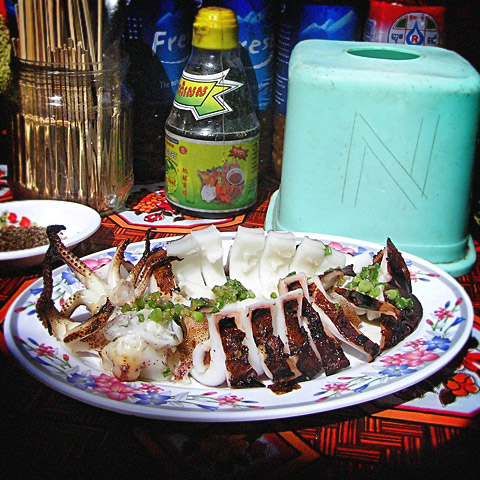
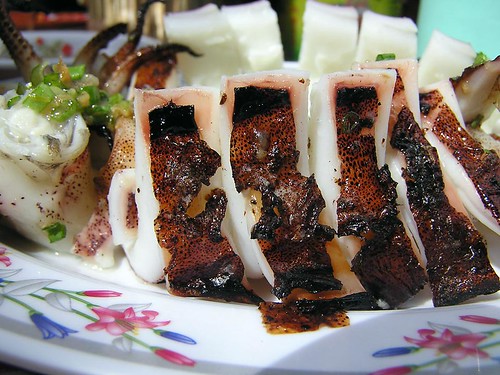
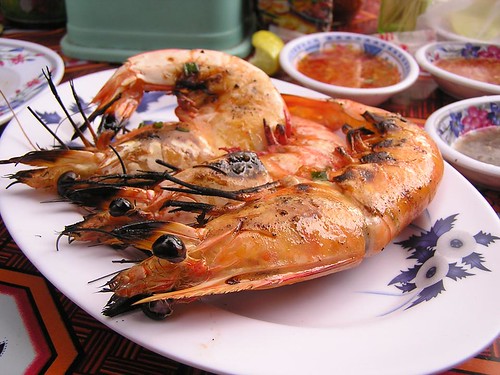
Phnomenon+2.0BETA.png)
